REVIEW: Blackstar Amped 2 compact all-in one amp solution
A flexible 100-Watt with built-in FX all in a compact pedal format
The new Blackstar Amped 2 is a compact solution for guitarists. Offering a 100-Watt amp, a cabinet simulator, built-in effects and a DI solution for both live use recording. In this first-look review, I’m going to share with you my opinions on this new compact floor unit.
Blackstar Amped 2 – Standout Features
- Compact complete amplifier solution
- Three tonal voices: USA, UK, or Classic
- Built-in 100w power amplifiers with scalable power output
- Integrated, configurable FX processor including Drive, Modulation, Delay and Reverb
- Computer-based editor for deep dive tone editing
Amped 2
Blackstar was kind enough to send me one of the new Amped 2 pedals to check out a week or so ahead of the official release date. This meant that I could put it through its paces and test out the features. There are a lot of features, so I had plenty of things to try out.
The new red unit follows on from the original white-coloured Amped 1 unit released in 2022.
My first impressions of the Amped 2 are that it is solid, with a nice build quality, so should handle being gigged and taken to rehearsals or studio sessions with no issues. The pedal itself weighs in at just under 2kg and has an aluminium chassis in that nice bright red anodised finish.
Before you plug it in it gives off an air of quality, I was also impressed by the number of ports on the rear and the easy-to-work-out user interface on the front panel.
The included manual isn’t really required and thankfully all the basic information fits onto neatly the folded instruction sheet. Inside there is a QR code so you can download the Architect editing software. I installed this onto my MacBook Pro so that I could check out how it integrates with the pedal.
Flexible
My first act was to unplug my amp head and attach the review unit to my guitar cab. It wires in just like my regular amp and I used the 8ohm speaker out on the rear.
Once it has fired up, I dialled in a basic crunch tone, and I was off playing.
I can do technical and so I’m not scared of getting dug into complex gear. However, this unit is very user-friendly and the front panel is neatly laid out. That took over the next 3-4 days and I just found the whole experience a breeze.
There are three basic preamp tones: USA, UK and Classic. These cover all the basics and are more than enough to do the job. Along with three tube power output emulations including EL84, EL34 and 6L6, plus, a presence control.
And, of course, you can also choose between 100 Watt, 20 Watt or 1-Watt power output settings.
You have the standard basic amp controls that all make sense and then there are four effect sections, each with its own set of controls and effects choices. They include a Drive section, Modulation, Delay and Reverb sections.
Each section has a mini toggle switch that allows you to choose the style of effect you want i.e the Drive section can be a Boost, Drive or Fuzz.
The foot switches below allow you to turn on and off the various built-in effects and there is a dedicated tap tempo switch as well.
Dial in
I was impressed at how easy it was to dial in a decent tone and I love that the small OLED display on the right side tells you exactly what setting you have dialled in. This will make it simple to use on a dark stage, or rehearsal room. Plus, it allows you to navigate quickly, which I found beneficial.
Having a 4×12 cab to hand, I decided to go through that as well and found it could drive that with no issues at all. All three of the output wattages are usable and whilst at home, I tended to hang out in the 20-watt setting. Though it will happily do a full 100-watt or neighbour-friendly 1-watt and it sounds good on all settings.
Effects
The built-in effects are all pretty usable, and they cover all the basics you would need for most tasks. I wasn’t blown away by any particular one straight out of the box, though I liked that you can tweak them (and the cabinet settings) via the Architect editing software. Once I tweaked them a little using the editor, I found they were pretty useful to have around.
Having extra control via holding down foot switches to enable freeze functions for the effects is also useful.
Drive
• Drive types: Boost, Drive and Fuzz
Modulation
• 3 Modulation types: CH/FL (Chorus/Flanger), Tremolo and Phaser
• Deep editing via Blackstar’s Architect software • Hold footswitch for ‘Emphasis’ effect
Delay
• 3 Delay types: Linear, Analogue and Shimmer
• Deep editing via Blackstar’s Architect software • Hold footswitch for ‘Freeze’ effect
Reverb
• 3 Reverb types: Room, Spring and Plate
• Deep editing via Blackstar’s Architect software • Hold footswitch for ‘Freeze’ effect
Tap foot switch for tempo/BPM input
• Hold: Shift function to access secondary functions of front panel controls
Architect
The Architect editor is quick and easy to use. For me, it makes the system a lot more useable, as you can tweak it to your heart’s content and make the Amped 2 your own. Sure, I could have used the unit without it, but I loved the benefits that it offers. It allows you to tweak all manner of useful things, including delay tails, reverbs, effects loop settings (for what you want to integrate your favourite stomp boxes) and virtual cabinet/microphone settings, etc
- Source: Jef Stone
- Source: Jef Stone
- Source: Jef Stone
- Source: Jef Stone
This simple editor definitely makes the show system easy to adjust to taste, and you can save your favourite settings, name them and categorise them. This allows you to build up a library of tones and potentially share them with other users. Which makes this system perfect for recording as well.
Recording
Logic Pro on my Mac saw the Amped 2 as an audio input straight way and I could record my amp tones straight into a session with no noticeable latency or annoying buzzing.
I really enjoyed this aspect of the unit and I could happily use one of these in my own studio, as it just works. Such a simple, solution and it doesn’t require any extra hardware. This could be a real benefit for a lot of musicians, as a guitar can be awkward to get into a DAW or PA system sometimes.
CabRig
The CabRig cabinet simulations work well, sure they are basic, but they do what they need to do and sounded how I would expect them to. No complaints from me there. Overall, the recording experience for me was really good and I liked the simplicity, with the ability to tweak if I needed or wanted to.
CabRig sends out four outputs to your DAW; Left and Right, these are both fully processed channels, Preamp only and Dry unprocessed.
It will also receive two channels from your DAW both with Line input for audio monitoring or backing track playback via the Balanced XLR and Line Out CabRig outputs.
Channel 2: Line input, right channel – Used for audio monitoring or backing track playback via the Balanced XLR and Line Out CabRig outputs.
Essential Extras
To finish off, there is a built-in chromatic tuner, power for your external effects pedals via two 9V 500 mA outs and a balanced XLR out with CabRig out. This XLR complements the line out/headphone out and USB out for recording. It’s nice having all three available, as it covers DAWs, mixing desks and beyond.
Plus, there is that effects loop I mentioned earlier, so combing this unit with other effects is simple.
Those outputs have a dedicated Level knob on the rear panel. At maximum setting, this control has no effect on the signal level. At the minimum level, this control attenuates the signal at these outputs by 20 dB. It is a universal voltage unit and so all you require is the included power cable, no annoying wall wart external power supplies.
Users can also choose between post-preamp/effects and pre-power amp line level output, which is a nice touch. Finally, you have MIDI control over the amplifier and effects parameters.
Closing Thoughts
There is a lot going on with the Amped 2 and I think it would take me a good few months to explore and utilise every single aspect of this pedal. In the week I have had it, my main takeaway is how easy it is to use. Yes, there are extra hidden depths you can delve into, but it all works well and is nicely implemented.
Overall, as an all-around guitar product, I rate it highly and it delivers on both tone and flexibility. Which makes it potentially a great solution for a lot of guitarists. I also really did enjoy the ease of use, as it is easy to get great tones out of this amp.
MSRP – EUR 649/GBP 577 *

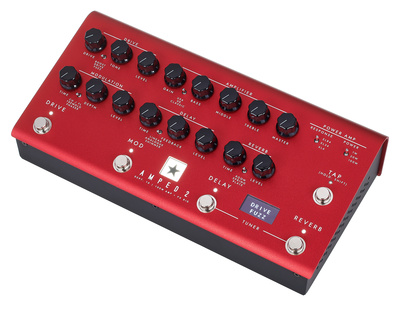
More Information
Videos
You are currently viewing a placeholder content from YouTube. To access the actual content, click the button below. Please note that doing so will share data with third-party providers.
You are currently viewing a placeholder content from YouTube. To access the actual content, click the button below. Please note that doing so will share data with third-party providers.
You are currently viewing a placeholder content from YouTube. To access the actual content, click the button below. Please note that doing so will share data with third-party providers.
* This post contains affiliate links and/or widgets. When you buy a product via our affiliate partner, we receive a small commission that helps support what we do. Don’t worry, you pay the same price. Thanks for your support!
12 responses to “REVIEW: Blackstar Amped 2 compact all-in one amp solution”
 4,7 / 5,0 |
4,7 / 5,0 | 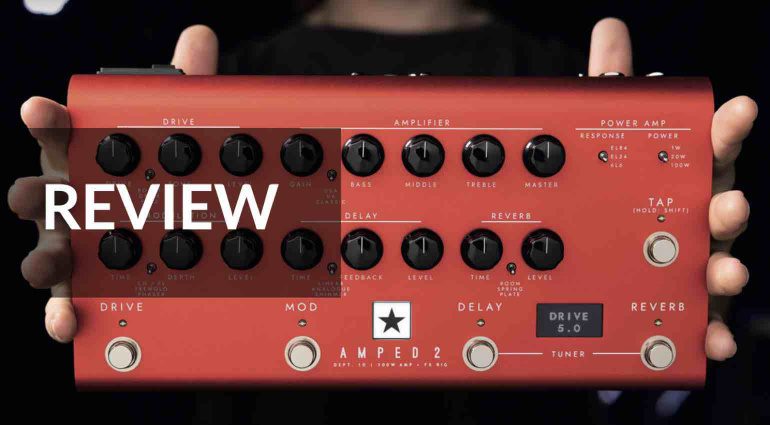

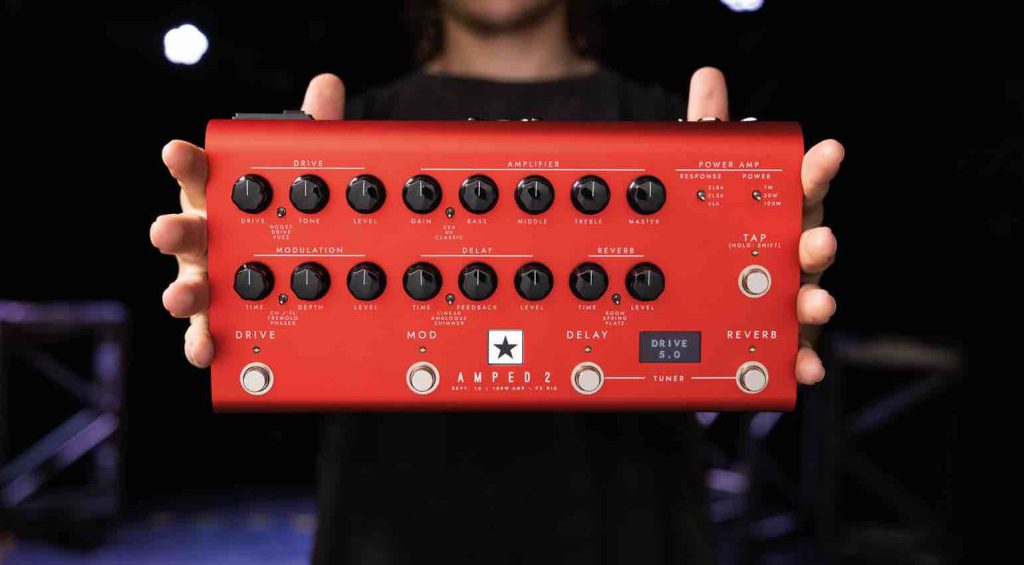
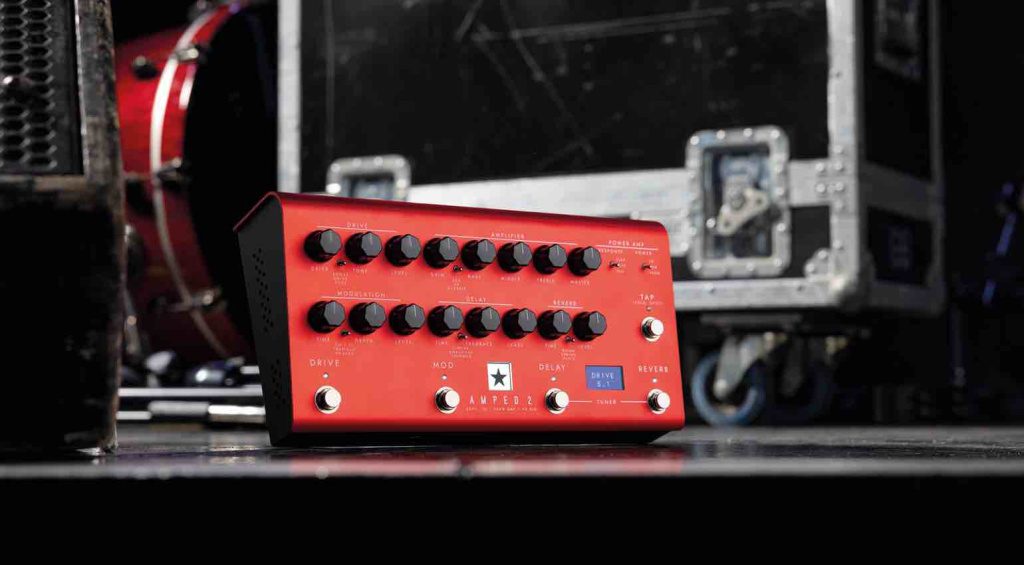
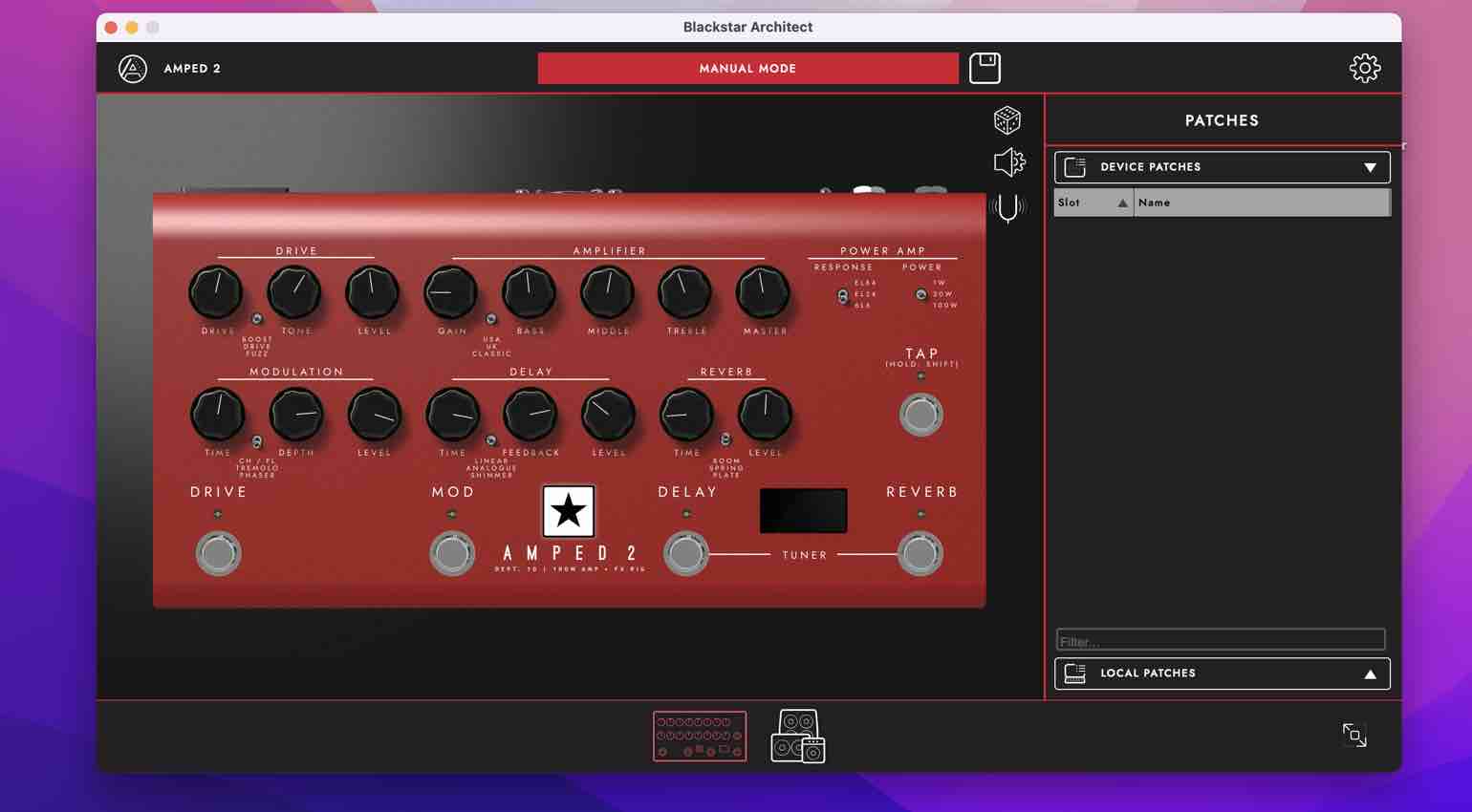

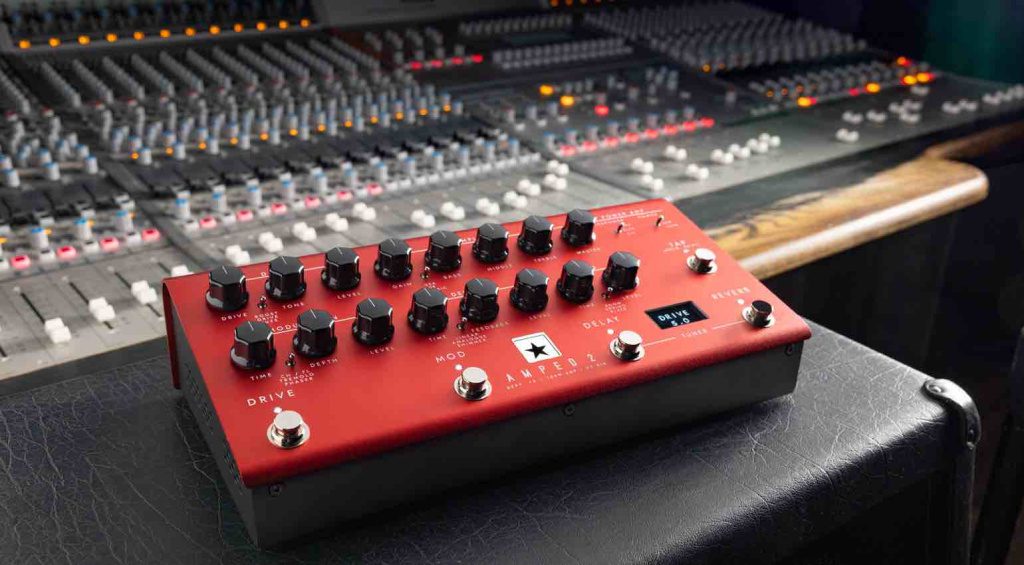


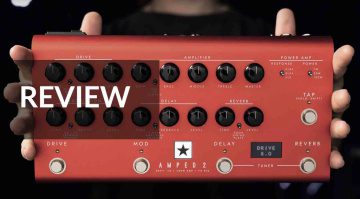


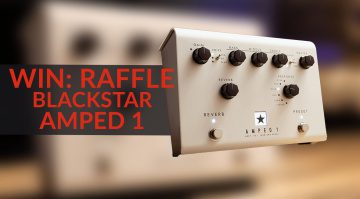


I am not a guitar player – but all in all I appreciate new ideas and technical solutions; due to SMD components and efficient SMPS power supplies such tiny and high-class guitar amplifiers are an excellent development.
But related to the ‘TS’-type speaker connector I am really more than surprised: since decades the ‘SpeakON’ technology (developed by Neutrik) is available around the world – but then in 2023 there is a modern amplifier which comes with simple, old-fashioned ‘TS’ speaker connectors !!
I couldn’t understand Behringer when some of their amps and power mixers were equipped with ‘TS’ connectors some ten years ago … but now it’s 2023 and some manufacturers still stick to this ‘TS’ idea going back to the last century . . .
That’s quite hard to understand.
It is normally only used on PA systems, though I have seen bass amps use it and also some studio monitors utilise it, though that was back in the ’90s. It just isn’t that practical for guitar amps. As we all use standard speaker cables for our amp heads and speaker cabinets. It would rule out using certain well-known gear, so I guess it is a little redundant.
Well, Jef – it’s a high-load (electrically as well as mechanically !) speaker connector – insulated and lockable. These are reasons enough I guess for accepting the SpeakON system as a general speaker connector.
I saw quite some guitar cables (!) used for amp-to-speaker connections (because a speaker cable was not available) … as well as severe damages in accessories because of wrong connections – since ”all” guitar-related equipment uses ‘TS’ plugs and sockets.
As a technician I really recommend to use appropriate connectors … and ‘TS’ plugs never were appropriated for amp-to-speaker connections since TS is being used in guitars and realted effect devices, so at signal level.
I would do ALL to avoid mistakes and severe damages in my equipment – and accept a NEW (well … decades ago!) system like Neutrik’s professional SpeakON as a solution not only for high-power amps, but also ALL speaker connctions in sound equipment – including guitar & bass equipment like these wonderful tiny pedal amps.
Just to avoid any wrong connection and resulting severe damages. I repaired too many of such equipment . . .
In over 35 years of playing the guitar, I have never had a situation that required the use of it for guitar. Though, I’ve used it on PA systems a lot. It is a bit like Betamax and VHS, one was better, just not widely adopted, etc
In almost 40 years of driving cars, I never had a situation that required the use of an electric car.
But since the TECHNOLOGY was devleoped and is available now I really would like to use it – because of its clear advantages.
So to me this is not at all a question of ‘require’ or ‘not require’ !
Decades ago there was the development of a specific, lockable, mechanically and electrically strong and reliable plug system developed for amp-to-speaker connections – ALL these attributes do just NOT exist in ‘TS’ connectors!
So why then continue with a former – and neither electrically safe nor strong and reliable – technology risking to accidentally plug in a ‘signal device’ in a speaker output ?
I always stick to new development (as long as it makes sense) … and then forget what we ”used to use before” – that was in the past, BEFORE new solutions were developed.
And since SpeakON is not yet widely adopted – that’s exactly the point of my remarks: WHY do manufacturers NOT use the best available technology responding to electrical safety and other client’s needs?
That was the point in my initial feedback after looking at this tiny pedal amp.
They aren’t new connectors though, and the guitar market has no real need to introduce them, as it offers little that guitarists want from a connector.
I can remember trying to sell the Speakon connectors to musicians in the 1990s and many just had no need for them. Unless they were buying PA systems or one set of Harbeth studio monitors we sold in that store. Plus, many didn’t like the upcharge for the cabling, which accompanied it. So, I guess the market decides what it likes and what it will pay for.
I still bump into Speakon connectors from PA hire companies, and the occasional bass amp, but not as often as I thought I would 25-plus years ago. I like them, but they aren’t essential for most working musicians.
In the beginning the ‘jack’ (‘TS’) connector was used for almost every audio connection … including speakers.
XLR was known – but the ‘balanced signal’ technology was used mainly in studio environments.
When solid state power amplifiers with higher wattages were manufactured, the weakness of the insuffucient (!) electrical contact in ‘TS’ connectors was considered a serious problem.
For a short time then the XLR connectors was used in amp-to speaker’ connections … but its contacts also were too limited.
It just does NOT make sense to use a 1,5 or even a 2,5 mm cable – and work with a ‘TS’ connector with its tiny contact surface of less than 0,5 mm !!
Therefore Neutrik developed the SpeakON technology in the late 80ies; so it’s the N E W standard for speaker connections – available since almost 35 years!
You wrote ” we…use standard speaker cables…” – well that’s the OLD standard you’re using!!
I never would stick to an old standard if there is a NEW standard providing destinctive advantages.
And: mechanic stability, electrical reliability & saftey and lockability definitely ARE tangible assets.
So guitar players stick to old technology?
Your last sentence hit the nail on the head. There have been lots of improvements and advancements over the decades, but guitarists ‘generally’ don’t want any of them. Not my decision, but it is certainly how the market place appears to work.
You wrote: > the guitar market has no real need to introduce them they aren’t essential for most working musicians I have never had a situation that required the use of it for guitar <
I am sure you know it already: SpeakON was NOT introduced as a solution for guitars, guitar players or the guitar market.
It's a standard developed for speaker (!) connectors … and since guitars also require amps and speakers it should also be accepted by all the guitar players.
Aside of mechanical stability (travelling, road use) and lockability (no unintended disconnection while playing) there are other considerable advantages: e.g. today's bass amplifiers may have power outputs of 500 or more Watt.
I remember: not only once I felt the physical heat in a TS connector which was used with high power (please boil 3…5 x water in a kettle and then touch cable & power plug) – 'TS' never was made for handling high currents provided by modern power amps!
And please do neither forget nor withhold information: for a short milli-second there is a short circuit when you plug in a TS speaker cable into a TS speaker socket … no major problem for most of today's power amplifiers which are protected against short circuits in the output section.
But there are nothing but advantages of SpeakON connectors compared to TS connectors – just worth the double price of a simple TS connector.
And I am sure: almost all today's standard guitar & bass players are capable of handling 2 different connector systems in their equipment (other musicians easily CAN!) – one for low signal levels like guitars and effects (TS) … and another one for amp-to speaker cables (SpeakON) . . .
Oh – I forgot the IEC 13 plug used in detachable power cables … so we have a third type of cables & plugs in many guitar equipment.
Or do guitar players use TS connectors even for power cords ?
I guess you need to direct these questions to the guitar amp and speaker manufacturers. They might have specific data for you as to why it was never adopted for guitar amps. I have no issue with Speakon, but I have never come across any specific guitar equipment with it on as standard. It is pretty much a standard TS connection on everything from amp heads, combos, speaker cabinets, power amps and even on power soaks, etc Good luck with that and let us know what you find out.
This >>so guitar players stick to old technology?<> There have been lots of improvements and advancements over the decades, but guitarists ‘generally’ don’t want any of them << . . .
Wow – what a picture of 'standard' guitar players you're introducing here ?!?
Despite of huge technical development and improvement in guitar-related fields you declare here that guitar players stick to what they know and have since many years ?!?
So: there IS technical development and improvement EVEN in the field of guitar equipment – but NOT in guitar PLAYERS ?!?
Wow!
I definitely will NOT direct questions to manufacturers … it seems to be useless since (at least some … or even many . . . of) their clients seem to stick to gear and ideas of the mid of the last century.
I am really happy to be a sound technician and struggling to include new ideas, technology and gear in my field.
Thanks for this insight and helping me to better understand guitar players – but I guess I'll not keep on working with such people – that's NOT 'my world'.
Probably for the best, as they are all pretty stuck in the 1950s with technology.
You are currently viewing a placeholder content from Facebook. To access the actual content, click the button below. Please note that doing so will share data with third-party providers.
More InformationYou are currently viewing a placeholder content from Instagram. To access the actual content, click the button below. Please note that doing so will share data with third-party providers.
More InformationYou are currently viewing a placeholder content from X. To access the actual content, click the button below. Please note that doing so will share data with third-party providers.
More Information